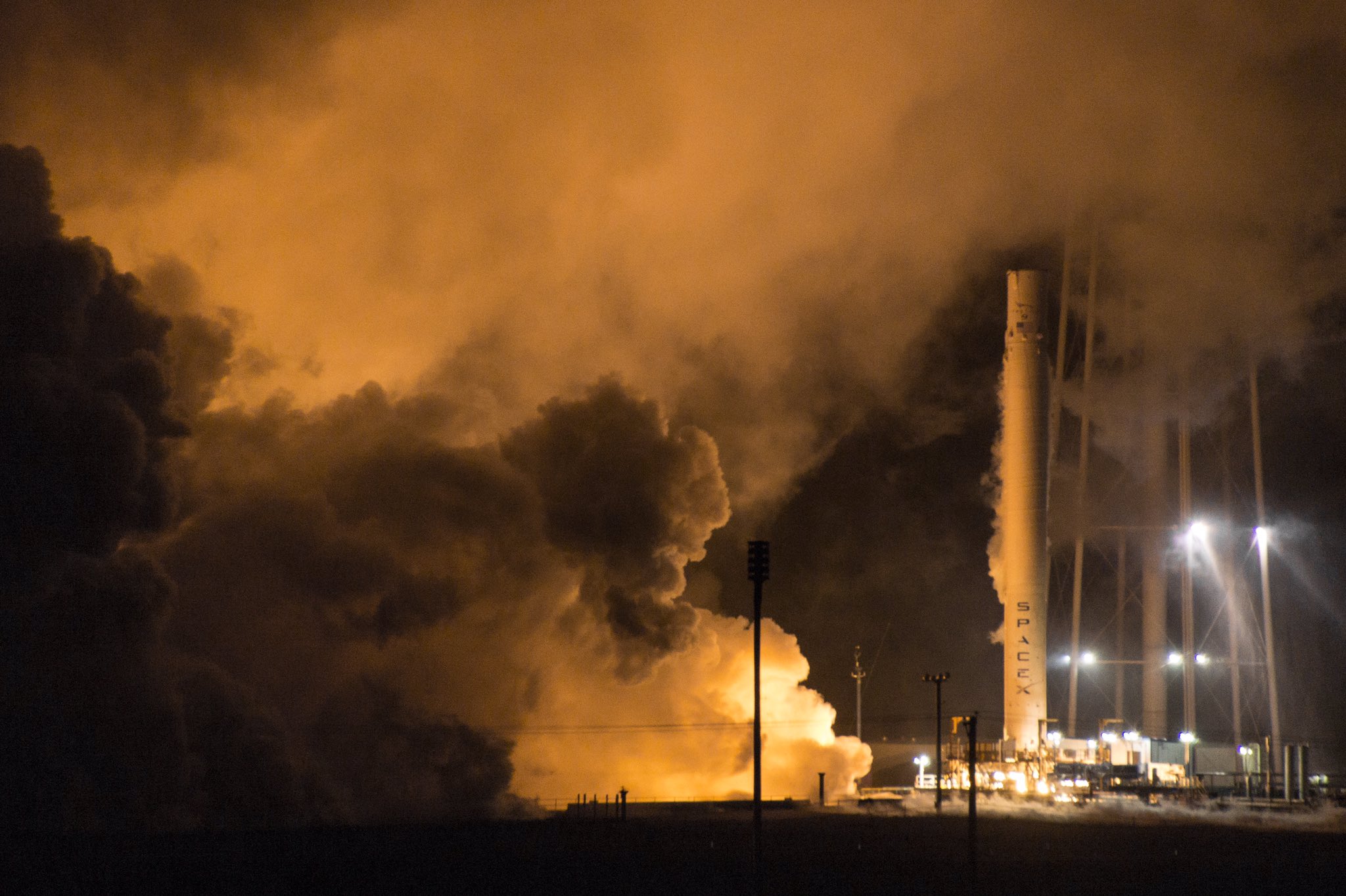
The first orbit class SpaceX rocket that will ever be reflown to launch a second payload to space was successfully test fired by SpaceX engineers at the firms Texas test facility last week.
The once fanciful dream of rocket recycling is now closer than ever to becoming reality, after successful completion of the static fire test on a test stand in McGregor, Texas, paved the path to relaunch, SpaceX announced via twitter.
The history making first ever reuse mission of a previously flown liquid fueled Falcon 9 first stage booster equipped with 9 Merlin 1D engines could blastoff as soon as March 2017 from the Florida Space Coast with the SES-10 telecommunications satellite, if all goes well.
The booster to be recycled was initially launched in April 2016 for NASA on the CRS-8 resupply mission under contract for the space agency.
“Prepping to fly again — recovered CRS-8 first stage completed a static fire test at our McGregor, TX rocket development facility last week,” SpaceX reported.
The CRS-8 Falcon 9 first stage booster successfully delivered a SpaceX cargo Dragon to the International Space Station (ISS) in April 2016.
The Falcon 9 first stage was recovered about 8 minutes after liftoff via a propulsive soft landing on an ocean going droneship in the Atlantic Ocean some 400 miles (600 km) off the US East coast.
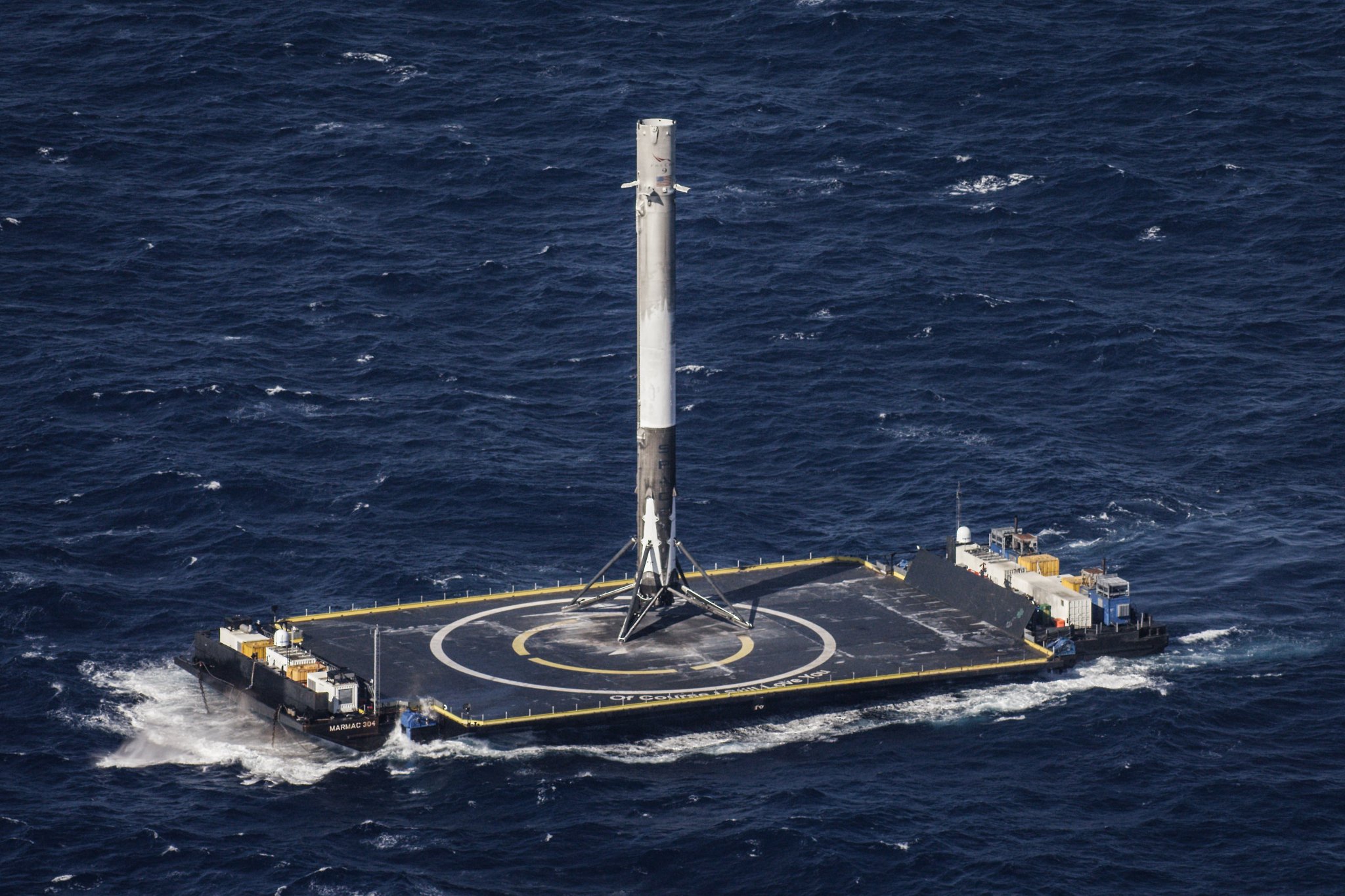
SpaceX, founded by billionaire and CEO Elon Musk, inked a deal in August 2016 with telecommunications giant SES, to refly a ‘Flight-Proven’ Falcon 9 booster.
Luxembourg-based SES and Hawthrone, CA-based SpaceX jointly announced the agreement to “launch SES-10 on a flight-proven Falcon 9 orbital rocket booster.”
Exactly how much money SES will save by utilizing a recycled rocket is not known. But SpaceX officials have been quoted as saying the savings could be between 10 to 30 percent.
The SES-10 launch on a recycled Falcon 9 booster was originally targeted to take place before the end of 2016.
That was the plan until another Falcon 9 exploded unexpectedly on the ground at SpaceX’s Florida launch pad 40 during a routine prelaunch static fire test on Sept. 1 that completed destroyed the rocket and its $200 million Amos-6 commercial payload on Cape Canaveral Air Force Station.
The Sept. 1 launch pad disaster heavily damaged the SpaceX pad and launch infrastructure facilities at Space Launch Complex-40 on Cape Canaveral Air Force Station in Florida.

Pad 40 is still out of commission as a result of the catastrophe. Few details about the pad damage and repair work have been released by SpaceX and it is not known when pad 40 will again be certified to resume launch operations.
Therefore SpaceX ramped up preparations to launch Falcon 9’s from the firms other pad on the Florida Space Coast – namely historic Launch Complex 39A which the company leased from NASA in 2014.

Pad 39A is being repurposed by SpaceX to launch the Falcon 9 and Falcon Heavy rockets. It was previously used by NASA for more than four decades to launch Space Shuttles and Apollo moon rockets.
But SES-10 is currently third in line to launch atop a Falcon 9 from pad 39A.
The historic first launch of a Falcon 9 from pad 39A is currently slated for no earlier than Feb. 14 on the CRS-10 resupply mission for NASA to the ISS – as reported here.
The EchoStar 23 comsat is slated to launch next, currently no earlier than Feb 28.
SES-10 will follow – if both flights go well.
SpaceX successfully launched SES-9 for SES in March 2016.
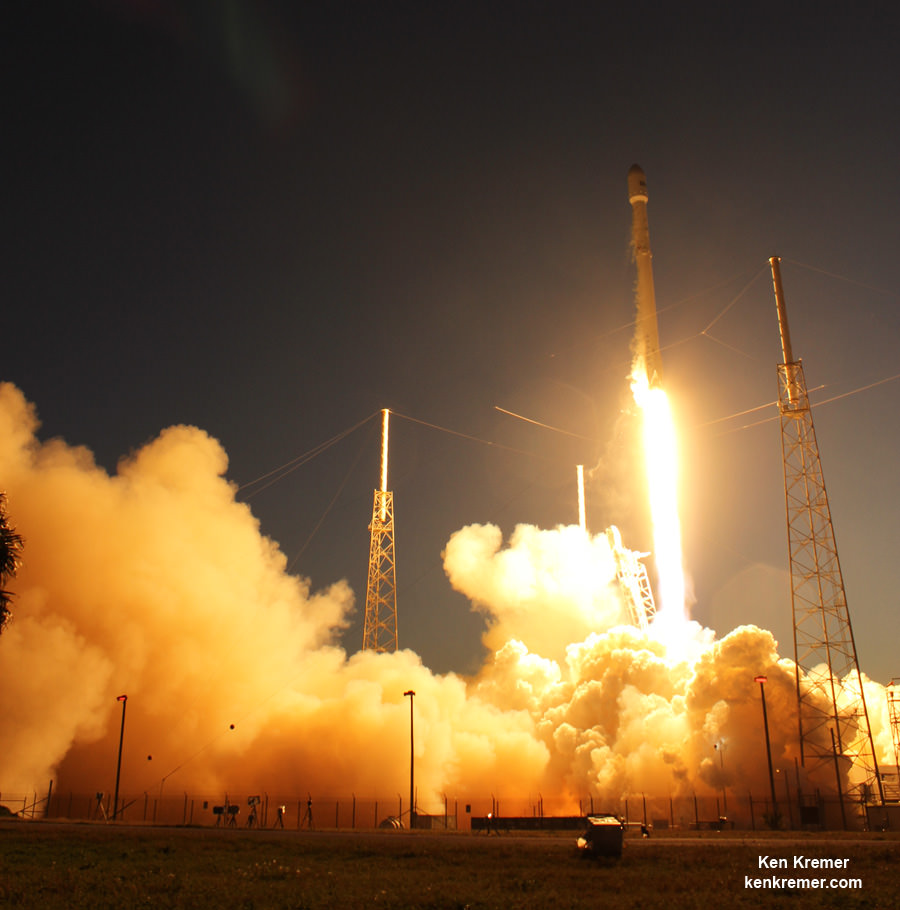
Last July, SpaceX engineers conducted a test firing of another recovered booster as part of series of test examining long life endurance testing. It involved igniting all nine used first stage Merlin 1D engines housed at the base of a used landed rocket.
The Falcon 9 first stage generates over 1.71 million pounds of thrust when all nine Merlin engines fire up on the test stand for a duration of up to three minutes – the same as for an actual launch.
Watch the engine test in this SpaceX video:
Video Caption: Falcon 9 first stage from May 2016 JCSAT mission was test fired, full duration, at SpaceX’s McGregor, Texas rocket development facility on July 28, 2016. Credit: SpaceX
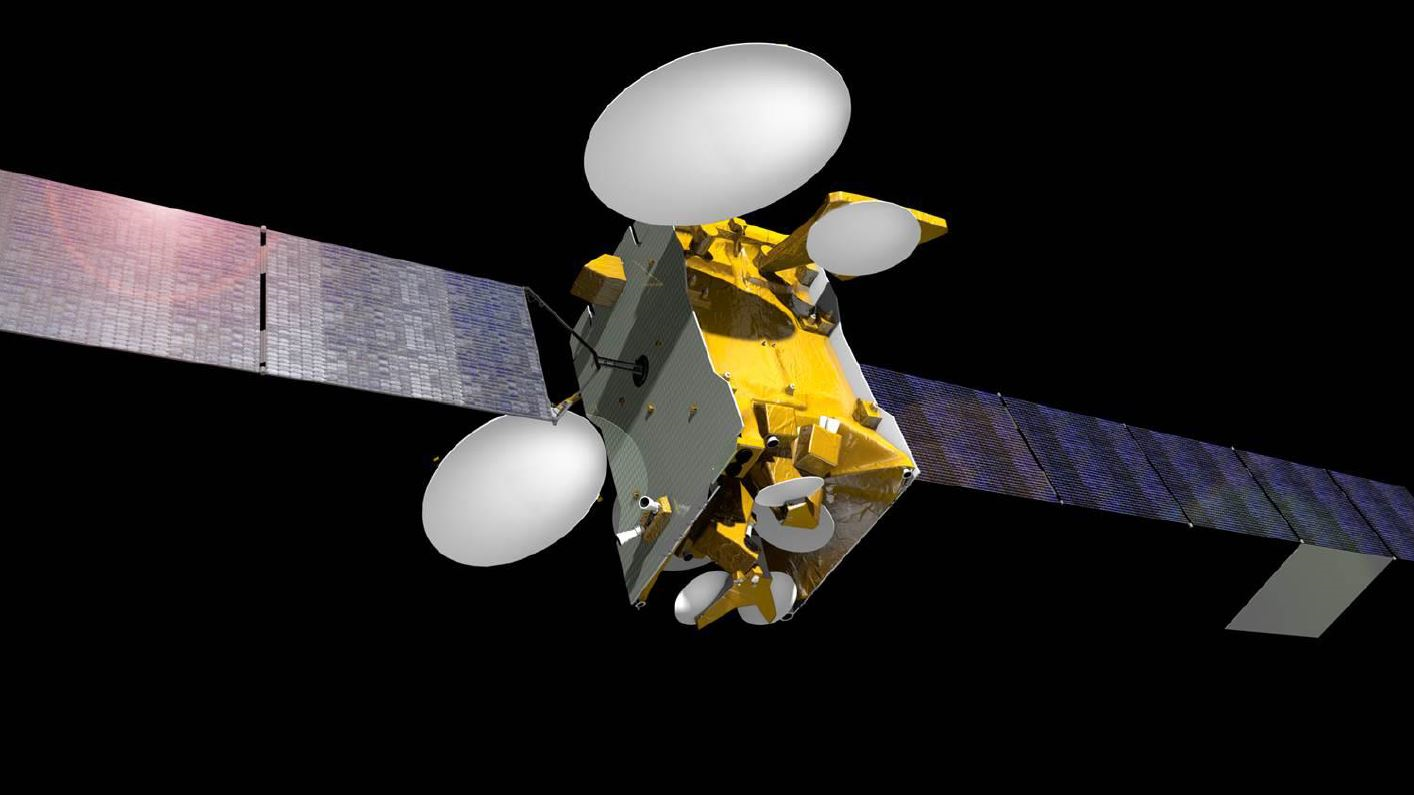
Stay tuned here for Ken’s continuing Earth and Planetary science and human spaceflight news.
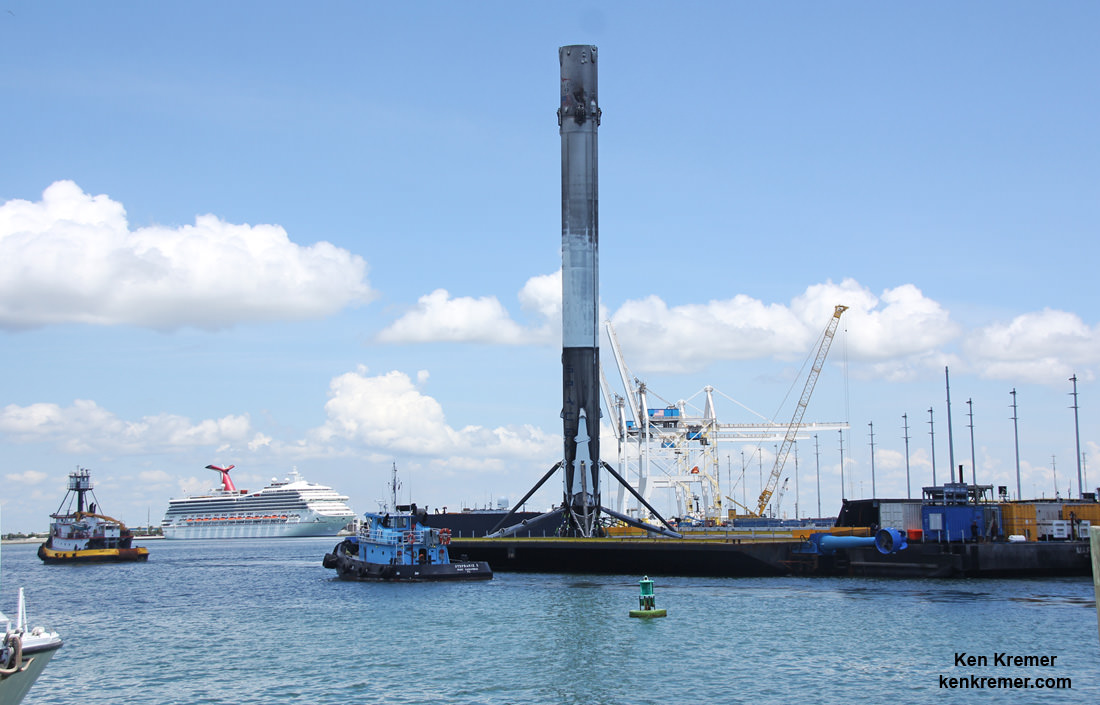

“The first orbit class rocket that will ever be reflown to launch a second payload to space was successfully test fired by SpaceX engineers at the firms Texas test facility last week.”
Weeeelll… it’s the 1st liquid-fueled rocket to do this, for sure. The Space Shuttle’s SRB’s were often reflown multiple times, but to be fair, they were limited by their exposure to (not to say “immersion in”) sea water once they fell back to Earth, which limited their viability to (I think?) 4 trips at most per unit. Still, the SRBs were reusable, & without them the Shuttle certainly wasn’t going to orbit.
Unlike the SRBs, & even earlier versions of the Falcon 9 booster, the Falcon 9 Block 5 1st stage (once operational) is touted to be indefinitely reusable, provided it undergoes regular maintenance & inspections… which, um, yeah, duh. ^_^
So maybe the net rumors that the turbo pumps have been experiencing cracking.. is bogus?
Or maybe SpaceX planned for that eventuality? Say with easily replacable blades?